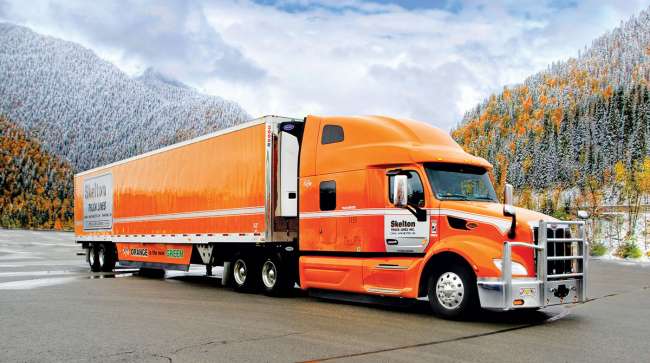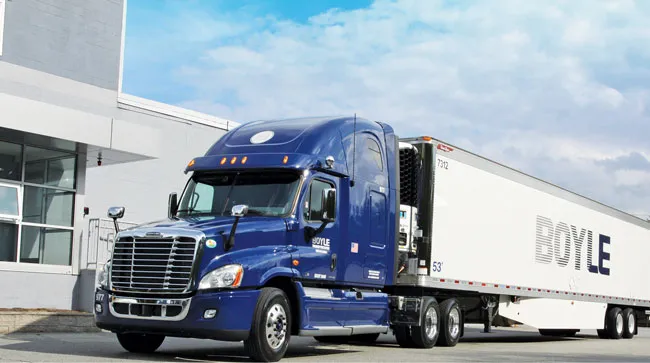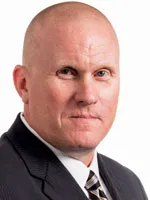How Carriers Are Taming Insurance Costs

[Stay on top of transportation news: Get TTNews in your inbox.]
Insurance costs have been steadily increasing post-COVID amid high inflation, increased labor and equipment costs, and larger settlements. Fleets are responding by investing in safety technology, altering coverage and taking on more risk.
“My goal is to make it as difficult and uncomfortable as possible for an insurer to justify or explain a rate increase to me,” said Michael Lasko, vice president of EHS and quality for Skelton Truck Lines and Boyle Transportation. “In order for that approach to work, you need to make investments in your approach to risk management and be able to show tangible results.”
Adam Barnett, chief underwriting officer for HDVI, said rates have been increasing quarterly for years.
“We’re still seeing insurance companies file rate increases of 5% to 15%,” he explained, adding that there are extremes in which some fleets experience greater increases and others remain flat.
Insurance usually lags other inflationary pressures because insurance companies have to file rate increases with the state.
“Even though the dollar inflation has cooled, we’re still feeling the effects of 5% inflation last year,” Barnett said.

Cook
Dan Cook, principal and transportation practice leader for True North Insurance, expects modest rate increases in 2025.
“While insurance companies are achieving greater rate adequacy,” he said, “underlying factors like social inflation, inflated medical billing and litigation financing continue to drive up claims costs.”
Lisa Paul, transportation practice leader, chief strategy officer at Hub International, noted that carriers that have invested in technology and tools to improve safety and driver behavior often get better pricing.
“Underwriters are starting to give more consideration to top ‘A’ fleets where they have a solid view into the telematics information and can substantiate improved pricing,” she said, adding that is good news. “The bad news is the trucking companies that haven’t bought into the technology game don’t have the data to show the insurance companies. Those companies are paying proportionately higher rates.”
Want more news? Listen to today's daily briefing above or go here for more info
Boyle Transportation and Skelton Truck Lines take a proactive approach, investing in training, advanced driver assistance systems, telematics, cameras and a human resources information system.
“Historically, that was always the winning recipe,” Lasko said.
However, in today’s market, even carriers with outstanding safety performance are paying higher rates due to lawsuit abuse, the resulting negative financial position of insurers and increased costs.
In the past, Boyle Transportation’s average cost per claim was less than $1,500. Today, that number has quadrupled even though the frequency and severity of accidents have stayed static.
“It just costs four times as much for the same repairs today,” Lasko said.
RELATED: Trucking Insurance Concerns Go Beyond High Premiums
Ken Johnson, executive chairman of Leonard’s Express, also has invested in safety technology, including inward- and outward-facing cameras, but he said simply having the technology doesn’t result in a discount.
“They say, ‘That is great, but we want to see results,’ ” he said.
Matt Egenolf, executive underwriter at Hudson Insurance Group, said the largest variable in risk is uncertainty from the motoring public.
“The most proactive, safest fleets often do everything correctly, yet the nature of a liability claim’s ‘value’ is often determined by the resulting damages, venue or strength of plaintiff counsel,” he said.
Barnett noted there is more distracted driving today, and the number of uninsured motorists on the road has grown, putting additional pressure on fleets.
“When a car has an accident with a trucker, they may not have enough insurance to cover the cost of the vehicle,” he said, “so that creates an underinsured claim for the trucker.”

Boyle Transportation invested in training and technology to improve its safety and driver behavior. (Boyle Transportation)
Self-Insurance
To help manage insurance costs, Leonard’s Express’ Johnson joined a group captive for auto liability, general liability and worker’s compensation insurance about 12 years ago.
“That takes us out of the market, so it is more experience-based than market-based,” he explained. We haven’t seen the increase there that the general market has experienced.”
Participation in insurance captives — a form of self-insurance — is on the rise, and Paul said technology enables fleets to project their losses better and make informed decisions.
“They’ll say, ‘If the insurance company doesn’t believe in us, we believe in us. We’re going to form our own captive or take a higher deductible,’” she explained.
Captives also can be useful for coverage types that aren’t always available, such as disruptions due to supply chain issues or losing a major customer.

Paul
“Those are business risks a company could address completely separate from the auto liability,” Paul said.
Underwriters like when fleets take on a greater share of the risk because it encourages safety. Johnson said being a part of a captive makes participants think more like an insurance company and actively work to reduce risk. The captive holds two annual board meetings and two risk control meetings to discuss best practices and ways to improve.
While Johnson has done well on some forms of coverage, Leonard’s Express, which is based in Farmington, N.Y., and ranks No. 85 on the for-hire TT100, has experienced as much as a 20% increase in the cost of excess coverage post-COVID.
“There aren’t a lot of insurance carriers in the market to begin with, so it is very difficult to find a decent program that is affordable,” he said.
Smaller fleets may face even more challenges than larger ones because they have more limited options since it can be impractical or impossible for them to retain as much risk. Still, Hudson Insurance’s Egenolf said he is seeing smaller fleets considering varying levels of deductibles.
True North Insurance’s Cook recommends small carriers focus on safety and superior compliance to become more attractive risks to underwriters and invest in a narrative that tells their safety story. “Developing a set of commercial ‘walking papers’ that supports traditional underwriting data can differentiate a motor carrier and ensure understanding from insurance providers,” he said.
Carrier Challenges
As technology costs come down and functionality increases, it is becoming easier for smaller fleets to adopt it.
“The way camera solutions work now, you take the driver behavior or the cause of the loss that occurred and turn that into the instant training for the driver training,” Paul said. “In the old world, the smaller fleets who didn’t have the dedicated safety managers struggled with that.”
HDVI’s Barnett said rates for small carriers tend to be algorithmic, so the lanes trucks travel in can heavily influence costs.
“The least expensive state is going to be half of what the most expensive state is,” he said. “As you get bigger, your insurance premiums are more based on your actual performance and claims history.”
RELATED: Carriers Hoping to See Relief After Years of Insurance Premium Increases
For example, Florida and Texas are high-risk states, while Ohio and Tennessee are more favorable.
“You’re not necessarily penalized where you start. If you drive toward safe places, you can save money,” Barnett said.
Hudson Insurance Group drills down into a carrier’s mileage footprint per state and compares expected losses with actual.
“Certain states and, more specifically, certain regions within these states generate greater claims frequency with traffic congestion and greater loss severity with increased litigation,” Egenolf said.
Jeff Loftus of FMCSA joins TT’s Seth Clevenger to discuss the current outlook on ADAS technology and how it will affect the industry at large. Tune in above or by going to RoadSigns.ttnews.com.
Mileage-based programs align a fleet’s insurance premium to its pure auto liability exposure, and actual user-based insurance that tracks mileage in real time can create opportunities to manage costs.
“Insurers will adjust the payment schedule to match the ebbs and flows of your cash flow,” Paul explained.
HDVI uses telematics to provide fleets with more data on their risks.
“Our rates are based on how much you drive, where you drive and what type of roads you’re on — rural or urban,” Barnett said, adding that tele- matics insurance results in a more tailored policy. “Fleets that have favorable exposures don’t get thrown into a big bucket.”
HDVI also offers behavioral-based insurance that responds to safety performance monthly.
“One of the challenges for truckers is that traditionally the ROI for investments made into safety is long tail,” Barnett said. “To invest in safety, a traditional insurance company may not respond to that for three to five years.”
As insurance costs increase, many fleets are decreasing coverage through higher retentions, lower limits and self-insurance.
“Although fleets recognize the operational risk in an increasingly litigious environment, the rising cost of coverage makes it challenging to remain fully insured,” Cook explained.
RELATED: New Jersey Lawmakers Raise Minimum Insurance
Fleets aren’t doing it by choice.
“They’re doing it because insurance is going up, but operating margins are staying razor thin,” Barnett said.
Insurance costs may increase even more for fleets that are investing in alternative-fuel vehicles, including battery-electric, hydrogen fuel cell and hydrogen, due to the higher costs associated with the equipment. “The physical damage value of those vehicles is substantially more than a traditional diesel tractor. Because the cost of the vehicle goes up, the cost to replace it goes up substantially,” Paul said.
Insurers also don’t have enough data on repair costs for newer types of equipment, so Barnett said there is “a long way to go” before there is a competitive insurance market for electric and hydrogen vehicles.
Those in the industry remain concerned about the potential for nuclear verdicts and the increasing frequency and severity of loss, especially as property damage settlements continue to outpace historical trends and development patterns.
“The most proactive, safest fleets often do everything correctly, yet the nature of a liability claim’s ‘value’ is often determined by the resulting damages, venue or strength of plaintiff counsel,” Egenolf explained.

Egenolf
Nuclear verdicts involve numerous factors, but Egenolf said most inflamed judgments stem from punitive damages.
“Ideal safety cultures have a shared and vested interest in all drivers’ well-being and their shared responsibility to the motoring public,” he said. “Unfortunately, even these fleets are not immune to nuclear verdicts.”
Lasko told TT that carriers are a target for predatory lawyers. Until the government enacts reforms, insurance costs will continue to rise, increasing costs for everyone, not just carriers.
“These costs get passed down to the general public as well with higher prices for goods and services,” he explained.
In addition to creating a safety culture, Lasko said he works to increase employees’ knowledge of nuclear verdict risk factors.
“I make sure each stakeholder in the organization is aware of the tactics that predatory lawyers use and how to protect our professional drivers and the organization,” he said. “This is a clear case of an ounce of prevention being worth a pound of cure.”





